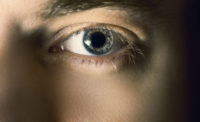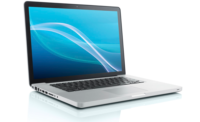On average, nearly nine in 10 adults (88 percent) spend more than two hours each day using a digital device, with one in 10 people spending at least three-fourths of their waking hours on a digital device.
This constant exposure to technology is a shock to our eyes -- 65 percent of Americans report symptoms of digital eye strain, such as dry, irritated, eyes, blurred vision, eye fatigue, neck and back pain and headaches.
Digital eye strain is the physical discomfort felt after prolonged exposure to digital screen and is associated with the close to mid-range distance of digital screens, including desktop and laptop computers, tablets, e-readers and cell phones. It is not uncommon to start experiencing symptoms after spending two or more hours staring at a device, or more realistically, multiple devices.
In fact, on average, 75 percent of people who use two or more devices simultaneously report experiencing symptoms of eye strain compared to only 53 percent of people who use just one device at a time.
Tools are available to help technology users alleviate the discomfort of digital eye strain, minimize vision problems and prevent further eye discomfort. When used in tandem with practical "eye-gonomic" health tips, lenses tailored for digital screen use (computer eyewear) can reduce or even prevent digital eye strain.
What can you do to prevent digital eye strain?
Just like people need different pairs of shoes for different occasions, there is also a need for different, specialized lenses to cater to varied vision needs. To accommodate how much lives have changed in the decade with digital devices, the optical industry has developed lens technology to protect eyes from blue light, glare and other environmental stressors.
Computer glasses are specially designed for optimizing vision when viewing content on screens and can be provided with or without a prescription. This eyewear can utilize different filters, lenses and materials tailored to lifestyle needs. Users experience more relaxation, sharper focus and reduced blurriness and pixilation, which can cause discomfort unless corrected. The lens designs allow adults and children's eyes to relax, adjusting to intermediate-distance objects and reducing glare during prolonged use of digital devices.
One of the most popular lens options is the anti-reflective, or AR, lens, which decreases reflection from overhead lighting to improve acuity and contrast. These specialized lenses can be combined with blue light-blocking capabilities. Blue light-blocking lenses selectively absorb harmful blue light, keeping it from entering through the cornea and reaching the back of the eye. These lenses are either infused with melanin or made to filter a specific range of blue light.
When examining the best options, consumers should take into consideration the amount of time spent in front of their computer, ambient lighting conditions, distance from their computer and the type of computer work being done. Consider if there are short bursts of computer work interspersed with meetings or other activities away from the desk. This will help determine between the need for lenses that offer a very wide, but shallow field of view (ideal for sustained computer work) and one that offers good computer vision but also lets you see clearly wherever you are inside the workplace.
Source: The Vision Council


